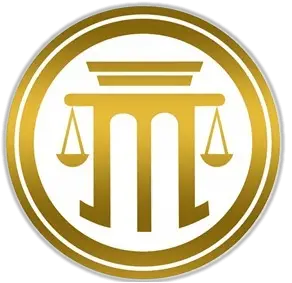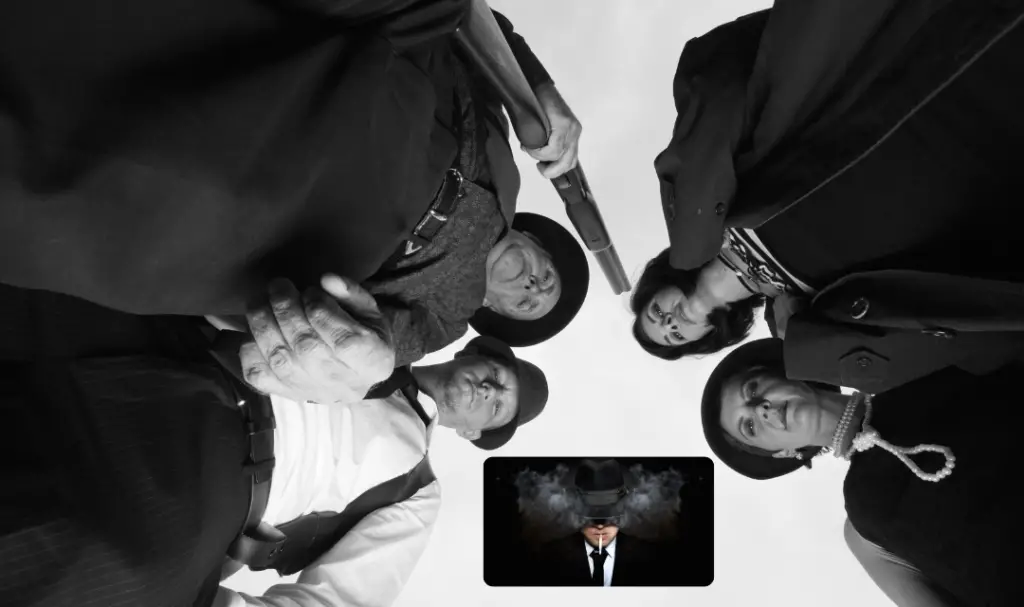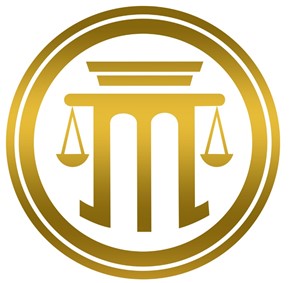The simple mention of the methods of committing the crime shows a purposeful planning of the conduct before carrying it out. The unlawful act must be preceded by serious thought and deliberation on the decision to carry out the criminal intent over a sufficient time interval to arrive at a sound judgment.
Evident Premeditation as An Aggravating Circumstance
“That the act be committed with evident premeditation”1
Evident premeditation is considered an aggravating circumstance. If a crime is committed under such circumstance, the penalty there for can be increased. Evident premeditation refers to a plan or decision made by the offender to commit the crime, which was thought out and prepared in advance. It is a deliberate and conscious decision to commit a crime, with sufficient time for the offender to reflect on the consequences of their actions.
Evident premeditation presupposes determination to commit the crime, planning or preparation to carry out the crime, and sufficient time for the offender to reflect on the consequences of their actions. The existence of these elements can be proven by circumstantial evidence, such as the manner in which the crime was committed, the time and place of the crime, and the behavior of the offender before and after the crime.
The aforesaid aggravating circumstance may exist in crimes such as murder, homicide, parricide, and treason, among others. If evident premeditation is proven, the penalty for the crime can be increased, which means that the offender may face a higher penalty than they would if evident premeditation was not present.
Whether by degree or period, it would depend upon whether evident premeditation is characterized as qualifying or a generic aggravating circumstance. If the former, penalty is increased by degree. Otherwise, it is by period.
Requisite Elements
The following requirements must be met for Evident Premeditation to qualify as an aggravating circumstance:
(1) the time when the accused determined to commit the crime;2
(2) an act manifestly indicating that the accused had clung to his determination to commit the crime; and3
(3) the lapse of a sufficient length of time between the determination and execution to allow him to reflect upon the consequences of his act.3
Time and Date
The date and the time when the offender decided to commit the offense are required since the lapse of time for the purpose of the third requirement is calculated from those dates and times.
Intent
Premeditation must be founded on external deeds, not on the passage of time. Criminal intent must be notorious and evident from the outset, and purpose and resolve must be clear and adopted after mature thinking on the part of the person who conceived the crime’s perpetration, as a result of deliberation, meditation, and reflection prior to its commission.
Illustrations:
The crime had been meticulously planned; there was prior planning of the necessary resources to carry it out; making repeated pronouncements about the victim’s hour of reckoning and arming themselves; sharpening the weapon in the afternoon before the crime; over the course of several weeks, the accused continually plotted and attempted to carry out the murder.
Lapse of Time
The culprit must be allowed to contemplate and deliberate calmly and serenely on the meaning and consequences of his act. Cold and profound reflection, as well as dogged determination in carrying out the unlawful conduct, indicate evident premeditation.
Conspiracy generally presupposes premeditation
In general, when a conspiracy is proven, the presence of obvious premeditation is assumed. Yet there is an exception, when conspiracy is inferred, obvious premeditation may not be understood, in the absence of proof as to how and when the plan to commit had passed before it was carried out.
Sufficient Lapse of Time | Depends upon the Facts of the Case
In People vs. Dosal,4 the Supreme Court ruled that:
From the morning of that day, July 5th, the accused conceived the idea of attacking the deceased. For this purpose he made the necessary preparations. He had one whole day to do this and late in the afternoon at about 5:00, with the bolo concealed under his shirt he went in search of Fernandez, going toward the very house of Felisa Palanas where he knew he could find his victim.5
In People vs. Mostoles, 6
Evident premeditation has also attended the commission of the crimes as an aggravating circumstance. In accordance with the evidence, this appellant and his confederates deliberately planned the commission of the offenses at about 4 o’clock in the afternoon and commenced the execution thereof at about 7:30 in the evening, or after the lapse of about three and a half hours. Sufficient time having, therefore, intervened between the conception of the idea and the resolution to carry out the killings, and the fulfillment of their preconceived plan, for the malefactors to dispassionately reflect upon the consequences of their act, or to desist from its execution (People v. Bangug, 52 Phil., 87; U. S. v. Gil, 13 Phil., 530), it is undeniable that the circumstance of evident premeditation aggravates the criminal liability of this Appellant.7
The High Court in People vs. Dumdum, Jr.8 held that:
The killing was planned an hour before it was perpetrated. The motive was revenge. That one-hour interval between commission and conception was held as sufficient lapse of time.9
Evident Premeditation Extant in other Situations
The commission of a crime is deemed premeditated if the perpetrator has planned or considered the criminal act beforehand. In other words, if there is evidence to suggest that the offender had consciously and willfully intended to commit the crime, evident premeditation exists in its commission.
Some factors that may indicate premeditation include the use of elaborate or well-thought-out plans, the possession of weapons or tools specifically designed for the crime, or the observation or surveillance of the target or location prior to the act. In addition, if the offender has a history of similar criminal behavior or has made threatening statements or gestures before the incident, this can also be taken as evidence of premeditation.
The Supreme Court in People vs. Renegado10 dissected the facts as follows:
Renegado, giving vent to his anger, told his co-employee Ramirez and the security guard that he would kill Lira. At the school dance, Renegado asked the security guard if Lira was around. On the following day, he confided to Mrs. Benita Tan that he would have killed Lira had he seen her the night before. On Monday morning, he armed himself with a knife and proceeded to the canteen around 9:30 a.m. and stabbed the teacher Lira who had his back towards him. The three requisites were proven.11
The Court went on and explained that:
Evident premeditation exists when sufficient time had elapsed for the actor to reflect and allow his conscience to overcome his resolution to kill but he persisted in his plan and carried it into effect. Here, appellant Renegado had more or less sixty-four hours from the Friday incident up to 9:30 o’clock of Monday morning within which to ponder over his plan and listen to the advice of his co-employees and of his own conscience, and such length of time was more than sufficient for him to reflect on his intended revenge.11
In People vs. Benito,12 the following were the antecedents, to wit:
It is undisputed that on December 12, 1969, at approximately 5:30 p.m., the victim, Pedro Moncayo, Jr., Assistant Chief of Personnel Transactions and Acting Chief of the Administrative Division of the Civil Service Commission, was followed by the accused, and when the car was about to turn at the intersection of P. Paredes and Lepanto Streets in Manila, the accused shot him eight times.13
The Supreme Court, in seeing that the crime is evidently premeditated, explained that:
What upsets the entire argument of the accused is the fact that the prosecution successfully proved the existence of evident premeditation because Exhibit “A”, his own declaration, narrates fully the several attempts of the accused to talk with the deceased; how he was rebuffed in those attempts and even insulted, and that he was jobless after having been dismissed from the office on allegedly fabricated charges made by the deceased. All of these admissions provided a strong motive for the accused to plan on how to retaliate against the victim by taking the law into his hands.13
Further:
The admission of the accused that he had with him a .22 caliber revolver on the afternoon of December 12, 1969; that when he saw the victim driving his car on P. Paredes Street he followed him up to the corner of P. Paredes and Lepanto Streets where he shot the victim eight times suddenly and without any warning speaks eloquently of his plan, generated by an all-consuming hatred, to kill the person whom he considered responsible for all his misfortunes.13
In People vs. Mojica,14, let us consider the following:
The accuser and deceased had bad blood from a previous incident. They fought November 16, 1968. The deceased, larger and bigger than the accused, smacked and told him to kneel. Before the accused could kneel, barrio councilman Justino Rosano separated the protagonists and ordered the deceased to go home. The accused stayed while the deceased went home. After departing, he said he would avenge himself within a month. It happened. The latter made it clear of his plan to avenge the incident. Two days later, the accused looked inside a bus for the deceased, but the latter was not inside. The accused found the deceased in a jeep and stabbed him.15
The Supreme Court concluding that evident premeditation is undeniable, stated that:
Further reflection ought to have persuaded counsel that his allegation that there was neither alevosia nor evident premeditation is inherently incredible. His client, using a butcher’s knife, without any wording, suddenly approached the victim and stabbed him. Such a circumstance clearly connotes treachery. So it has been from United States v. Barbosa, a 1903 decision, to People v. Payao, decided less than six months ago. Equally so the existence of evident premeditation is undeniable.15
Crimes or Circumstance | Coupled with Evident Premeditation
As mentioned, evident premeditation is a circumstance that can aggravate a crime and increase the punishment imposed on the offender. In addition thereto, other aggravating circumstances and crimes may also exist together with evident premeditation. This includes, but is not limited to, treachery, cruelty, the use of firearms, recidivism, and heinous offenses such as murder, rape, and kidnapping. Any one of these aggravating circumstances may result in a harsher sentence for the offender.
Evident premeditation and a price or reward
If, as a general rule, price or reward entails premeditation, it is equally true that the latter can exist without the former. The prize or promise absorbs premeditation. Doing an act for a reward does not provide enough time to dwell about the implications.
Evident premeditation in robbery
If the plan included killing the victim, evident premeditation may aggravate the act. If there is no proof of a premeditated killing strategy in robbery, evident premeditation is not aggravating in robbery with homicide.
Final Thoughts
Now to sum up. Evident premeditation, like other qualifying circumstances, must be proven by clear and definite evidence demonstrating that prior planning and preparation occurred. For evident premeditation to be appreciated, the prosecution must show the following: (1) the time the accused determined to commit the crime; (2) an act manifestly indicating that the accused clung to this determination; and (3) a sufficient lapse of time between the resolve to kill and its execution that would have allowed the killer to reflect on the consequences of his act.16
Time alone cannot indicate if a defendant’s crime was planned and intentional. All that is required for premeditation and deliberation is the time it takes to create the purpose, consider the crime, and then act. Defendants can premeditate and deliberate in minutes if the cognitive process happens prior to the conduct.
- Article 14, Par. 13, Revised Penal Code[↩]
- People vs. Moreno, G.R. No. 217889. March 14, 2018[↩]
- Ibid.[↩][↩]
- G.R. Nos. L-4215-16, April 17, 1953[↩]
- Ibid.[↩]
- G.R. No. L-2880, March 31, 1950[↩]
- Ibid.[↩]
- G.R. No. L-35279, July 30, 1979[↩]
- Ibid.[↩]
- G.R. No. L-27031 May 31, 1974[↩]
- Ibid.[↩][↩]
- G.R. No. L-32042, December 17, 1976[↩]
- Ibid.[↩][↩][↩]
- G.R. No. L-30742, April 30, 1976[↩]
- Ibid.[↩][↩]
- People vs. Moreno, G.R. No. 217889, March 14, 2018[↩]


